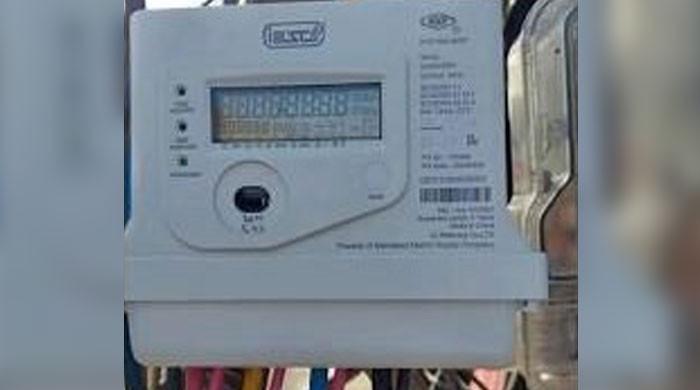Inequality and growth
There is a need for inclusive growth that is pro-poor and the goals of growth and reduction in inequality need to be achieved simultaneously
May 31, 2021

Inequality is an impediment in national development. There is a need for inclusive growth that is pro-poor and the goals of growth and reduction in inequality need to be achieved simultaneously. This is the key message of the ‘Growth and Inequality: The Impact of Covid-19’ chapter in the recently released UNDP’s ‘National Human Development Report (NHDR)’ and we are referring to it in this article today.
Dr Hafiz Pasha and his team constructed a macroeconomic model to analyse the growth and inequality trends historically by including numbers on different components of the GDP such as employment, public finances, the balance of payments, and inflation.
Low levels of inequality lead to increased demand and more consumption expenditure. Since much of produce is locally produced, increased demand can decrease inequality as well as spur growth. Another finding is the more the inequality is, there would be less tax revenue for the government. So, this is another link between inequality and growth. Similarly, demand for money also increases with more equal income distribution. In other words, more inequality means more pressure on the prices of domestic goods and more inflation.
A higher tax-to-GDP ratio, particularly of direct taxes, decreases inequality. Pro-poor spending in the form of increased expenditure on healthcare, education, and social protection also decreases inequality.
The NHDR team has calculated the impact of some of these indicators. One percent increase in pro-poor spending decreases inequality by negative 0.10 percent. In the same vein, a one percent increase in the tax-to-GDP ratio decreases inequality by negative 0.51 percent.
Under the two democratic governments post Musharraf, labour productivity witnessed only a limited increase and corporate profits also went down but the tax-to-GDP ratio increased by almost three percent. All these pointers led to relative decrease in inequality. Added to it is the factor that provincial transfers increased quite a bit following the 7th NFC Award and the provincial governments spent on health and education. Coupled with a focus on income support through BISP, all these factors contributed to relative reduction in inequality during the tenure of the two democratic governments following the period of high growth, higher labour productivity, higher corporate profitability and higher inequality during the Musharraf era.
In terms of the impact of Covid on Pakistan’s economy, there has been substantial impact. The volume of world trade reduced by 30 percent and it adversely impacted Pakistan’s exports. Lockdowns might have led to up to 10 percent reduction in the accessibility of domestic as well as imported goods.
Construction, cotton ginning, and transport and communication are three important sectors that have been badly impacted due to Covid-19 in Pakistan. The government official statistics somewhat not adequately capture the negative impact of the pandemic on the growth.
Not only did export orders decrease and payments for previous orders falter, but the risk-averse behaviour of entrepreneurs also became apparent with the fall of the private investment. The underutilized capacity of the manufacturing sector served as a disservice to upgrade the capacity or increase investment in the new capacity. Entrepreneurs also faced the liquidity crunch. Calculations show that private investment that was not high even in the pre-Covid period might have further fallen by 17 percent in 2019-2020 in real terms.
Collectively, the above-mentioned three sectors of the economy and agriculture are responsible for roughly two-thirds of national value added in Pakistan and are also the source of 80 percent of employment. Therefore, an adverse impact on these sectors due to Covid-19 is likely to have a ripple effect on the rest of the economy in the country.
In terms of the revival of the economy, NHDR 2020 projects construction, the government sector and community services (especially health) to lead the process. After 2020-2021, domestic trade and the manufacturing sector could also bounce back.
The two most developed and urbanized provinces – Punjab and Sindh – would have experienced a more adverse economic impact due to Covid-19 than other regions. Both the provinces collectively house 90 percent of manufactured exports of the country. Punjab has clusters of SMEs in particular that are labour intensive.
Covid-19 similarly had a negative impact on inflation, balance of payments, and the government budget. As far as education is concerned, according to an estimate, 55 million children’s education has been affected due to school closure. The unemployment rate increased from 6.2 percent in 2018-19 to 15.3 percent in 2019-2020. In the pre-Covid days, 37 percent of Pakistan’s population was below the poverty line and it is further likely to have increased to 49 percent due to the adverse impact of the pandemic on poverty in the country.
To deal with this adverse impact of Covid-19 on the economy and inequality, the NHDR suggests increasing spending on cash transfers for the poor as well as augmenting the budget of the Utility Stores Corporation. It also suggests providing soft loans to private sector employees who have been laid off., and recommends higher spending on the development sector, particularly in healthcare. Generating diverse employment particularly for the youth through public spending on infrastructure repair projects is also recommended.
Improving access to credit, improving ease of doing business, replicating Punjab’s land records digitization in other provinces to facilitate registration and transfers is also suggested. Increasing development expenditure, decreasing non-development expenditure, maintaining a good interest rate and increasing the tax-to-GDP ratio are the overall recommendations for spurring growth and reducing inequality.
The writer is an Islamabad-based social scientist.
Email: [email protected]
Originally published in The News









